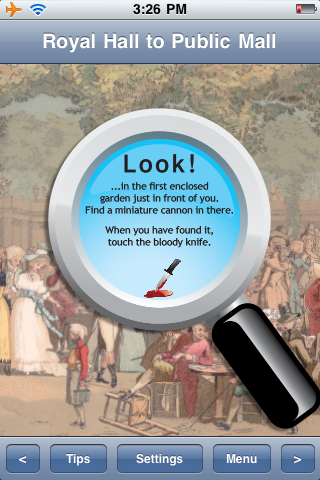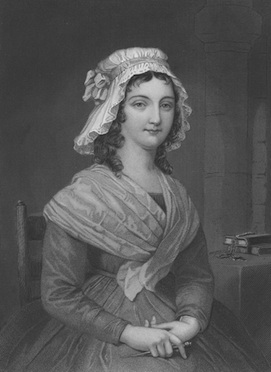Interview: Sarah Towle – 2
Episode 2: Developing StoryApps.
You can now read Episode 1 of our 2 part interview with Sarah Towle here.
What inspired you to develop StoryApps?

When I was finally ready to begin searching for the editor of my dreams, the global economy crashed and the publishing industry as we knew it was flipped on its head. Those editors I did speak to loved the project concept and execution, but they found it too big a risk in our changing times. It was too new, too different. They didn’t know where it would sit on a bookstore shelf.
Simultaneously, the world of self-publishing was becoming less stigmatized and more affordable through print-on-demand models. So I picked one story, mocked it up into a little desktop publication and tested it with 48 13 – 14-year-olds. Much to my dismay, I discovered that it didn’t work. The kids found reading from the text cumbersome and too much like school. They loved the voice of the narrator; they loved learning history through story; and they enjoyed the interactive activities. But they were additionally frustrated by the limitations imposed on those same activities by the print medium.
As luck would have it, I had recently held an iPhone for the first time. Though there was then nothing in the App Store quite like what I envisioned my project to be, I saw the possibilities immediately. With the ability to combine audio, visual, text and gaming elements, the mobile device would not only be the perfect medium for my Time Traveler Tours, but it would also allow me to improve upon the concept.
I asked the kids, all ‘digital natives’, if they thought the StoryTour would work as an iPhone app. They agreed it would, 100 per cent.
Soon after that I discovered that I would have to wait for the publishing industry to catch up with me and the kids if I wanted someone else to produce it for me. In 2009, the model of editors purchasing rights to turn great ideas into products had not yet found its way to creating StoryApps from original content. So, tenacious, stubborn and persevering soul that I am, I decided, why wait? I’ll do it myself.
What are the similarities and differences between writing a non-fiction book versus creating a StoryApp?
Digital formats like tablets and smart phones allow you to add such features as audio narration and visual animation. Touch screen technology opens up the possibilities for adding interactive games that teach related skills and concepts. The challenge is to make these interactive elements work to enhance the story content, not distract from it. Too many StoryApps include, in my humble opinion, unnecessary bells and whistles. In these, the story tends to get lost.
Tablets and mobile devices also allow us to take stories with us on the go, in the car, train or plane, or to the grocery store where cranky kids can be entertained, and educated, while you wait in line.
A book, however, provides real human interaction, a warm lap and a familiar voice, as well as the power to let your own imagination soar.
Some fear for the book. I do not. Indeed, I think this is an exciting time for authors and illustrators as new doors are being opened to us everyday. Advances in digital technology now offer us the rare and wonderful opportunity to publish for the format that best suits our creation. Not every project lends itself to the app format, for example. But in the case of my Time Traveler Tours, the mobile format was the only option.
With mobile, I am able to marry audio with textual narration. Remember that my pilot group didn’t want to assume the role of the narrator/guide and stop to read the text at each new point in the itinerary. As a StoryApp, you can listen while you to wander through the actual story setting, interacting with history and your traveling companions at the same time. Back at home, you can return to the story a different way and, turning off the audio, to read it as you would a book.
As an app, Beware Mme la Guillotine gives you myriad choices for consuming the story and related content. You can do the tour as intended, interacting with all treasure hunts, games and more-info prompts; or you can elect to skip some of the activities. You can follow the story and hop over the games altogether. You can listen to the story and read along at the same time. You can run the app continuously, or take a break to investigate a groovy boutique or art gallery. The story remains linear, with a clear beginning, middle and end. But how you choose to interact with the story is not.
What are the challenges of writing for young adolescents?
For me, as a writer of creative non-fiction for young adults, the greatest challenge is to make history accessible, understandable and fascinating at the same time, to bring it to life while also making it relevant to today. To do this, the focus can’t be about names and dates. It must reach out to you on a human level, to paint a picture that you can relate to, to show you what another life looked, smelled and felt like such that you see, smell and feel it too.
Why did you pick Charlotte Corday to be the protagonist of your first StoryApp?
Charlotte reached out from her historical slumber and grabbed hold of my imagination. My goal with this project was always to reveal seminal moments in history through the point of view of lesser-known but extremely colorful characters.
Charlotte was perfect. What isn’t compelling about a 24-year-old girl of noble birth being driven to murder a man and going to the grave as a result, yet certain and proud of her actions?
Which other historical characters’ stories would you like to make into Time Travel Tours Apps?
My coming StoryApp Tour to the Ancien Régime takes place in the Versailles gardens and is narrated by Antoine-Laurent de Jussieu who, like his uncles before him, served as Botanist-in-Chief to the king. It may sound tame after the story of a murderess, but these guys were the Indiana Joneses of their time!
Also in production is a voyage to the era of Napoleon Bonaparte with a gravedigger who had a hand in creating by the Paris Catacombs and Montparnasse Cemetery.
Paris’ Romantic era will be revealed by Nadar, the world’s first portrait photographer. Nadar survived two Empires, three kings, two Republics, and numerous revolutions while contributing to the dawning of a new industrial age.
A sculptor’s apprentice tells the story of Medieval Paris; a slave’s voice examines Roman Paris. And the list goes on…
What is next for you and Time Travel Tours?
First is the release of the bilingual version of Charlotte’s StoryApp. I’m very excited about this development. You will have the option to access the app in either French or English, or a combination of the two, much as you would select your language and sub-titles on a DVD.
Then, I plan to produce two more Paris as well as two London StoryApp Tours in 2012. I’m reviewing manuscripts for the London stories now.
Finally, if things continue to go well, I intend to add additional cities and additional formats. I just returned from Athens where I was looking for stories. And I can’t wait to create the story tour of my old stomping grounds, New York.
Thank you Sarah for taking time to do this interview with My French Life™. We’ve enjoyed getting to know you and learning more your StoryApp.
Images credit Sarah Towle.









